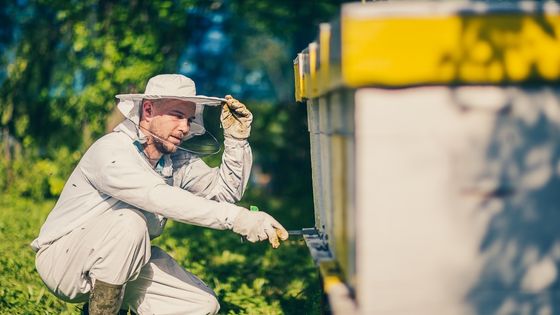What should you do if your hobby of apiary beekeeping develops into a successful business with rising demand for your premium honey? There are two options: either you stay put and enjoy your pastime as a wonderful activity, or you come up with a plan to grow your business. Since you’ve been in the Australian Bee Products beekeeping industry for a while and can see that there is a growing market with impressive profits, why not grow your company? It is definitely a fantastic chance to work toward it.


You may wonder why you should consider an expansion plan if there isn’t enough room for more beehives to care for more bees. Or your neighbourhood probably lacks sufficient gardens or blooms where your bees can obtain more nectar. Or do you have any other constraints, such as those imposed by your neighbours or your beekeeping license? There are many factors that can bring about the “status quo,” so to speak. But here are some concepts for you to think about.
There are various beekeeping techniques that have been used up to this point, such as renting a plot of land that can be used as an apiary or bee yard. An apiary is a location where you can place as many beehives as you like in accordance with your strategy. You may even use some of the honey produced in this apiary to cover your rent. In some cases, a farmer will pay a honey beekeeper since the farmer really needs the bees to help with pollination.
You can collaborate with farmers whose crops often require the presence of bees for pollination. For the benefit of bee pollination, some farmers are ready to provide beekeepers with a free lease on their property. With such a farmer, you can agree on a long-term contract and manage your beehives in accordance with the crop-growing cycle. Looks like a win-win situation for both the farmer who needs your honey bees’ assistance and you, the beekeeper, doesn’t it?
Let’s proceed and examine how to pick a suitable location for your apiary now. The following criteria should be met by a quality apiary:
Proximity to nectar sources It must be close to a field or crop that is in bloom. Bees can search for nectar up to three kilometres from their colonies, but if they are unable to find any, they will wander up to twelve kilometres. If you set it too far away from the source, they may move and find another location that is closer to the source, leaving your hives empty.
Temperature. Think about choosing a location where the summertime maximum temperature isn’t too high because this could melt the bee wax inside the hive. Bees will take more time to cool the wax if it melts, collecting more water than nectar in the process. Please be aware that beeswax melts at a temperature of about 110°F, or 45°C. Bees are more likely to become agitated and disturbed when the temperature is high.
Conclusion:
The safety of your colonies. Beware of creatures that consume honey, such as the honey badger or ratel. If there are badgers near you, you should add an extra layer of security by securing your hive with a sturdy luggage strap. Additionally, you should be cautious of human thieves and offer the required security.

























